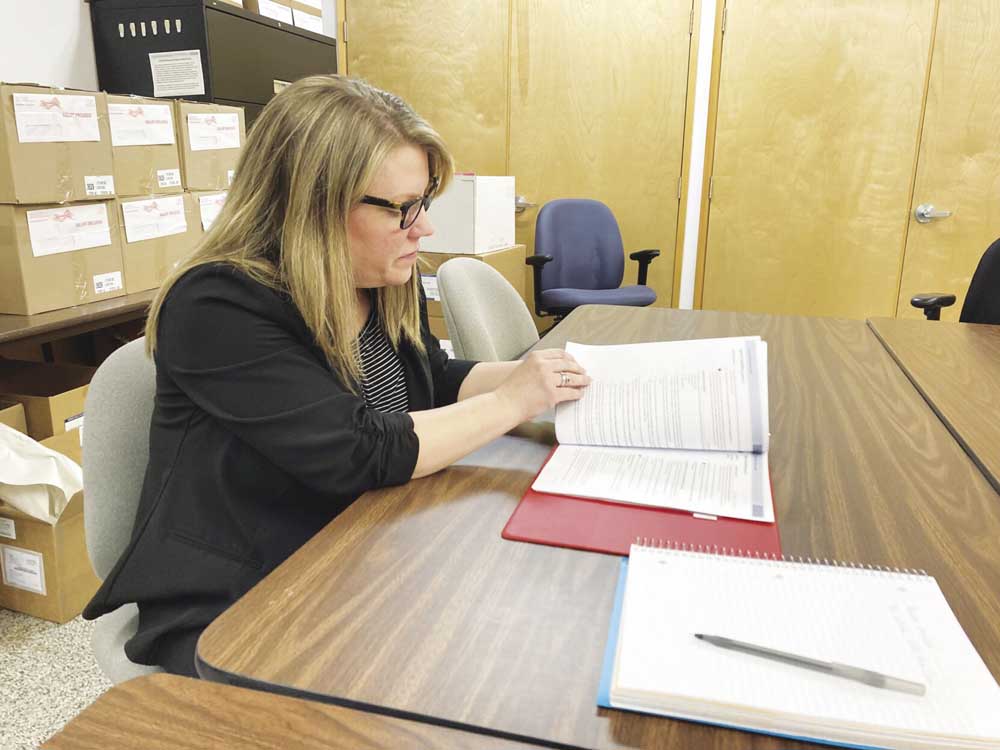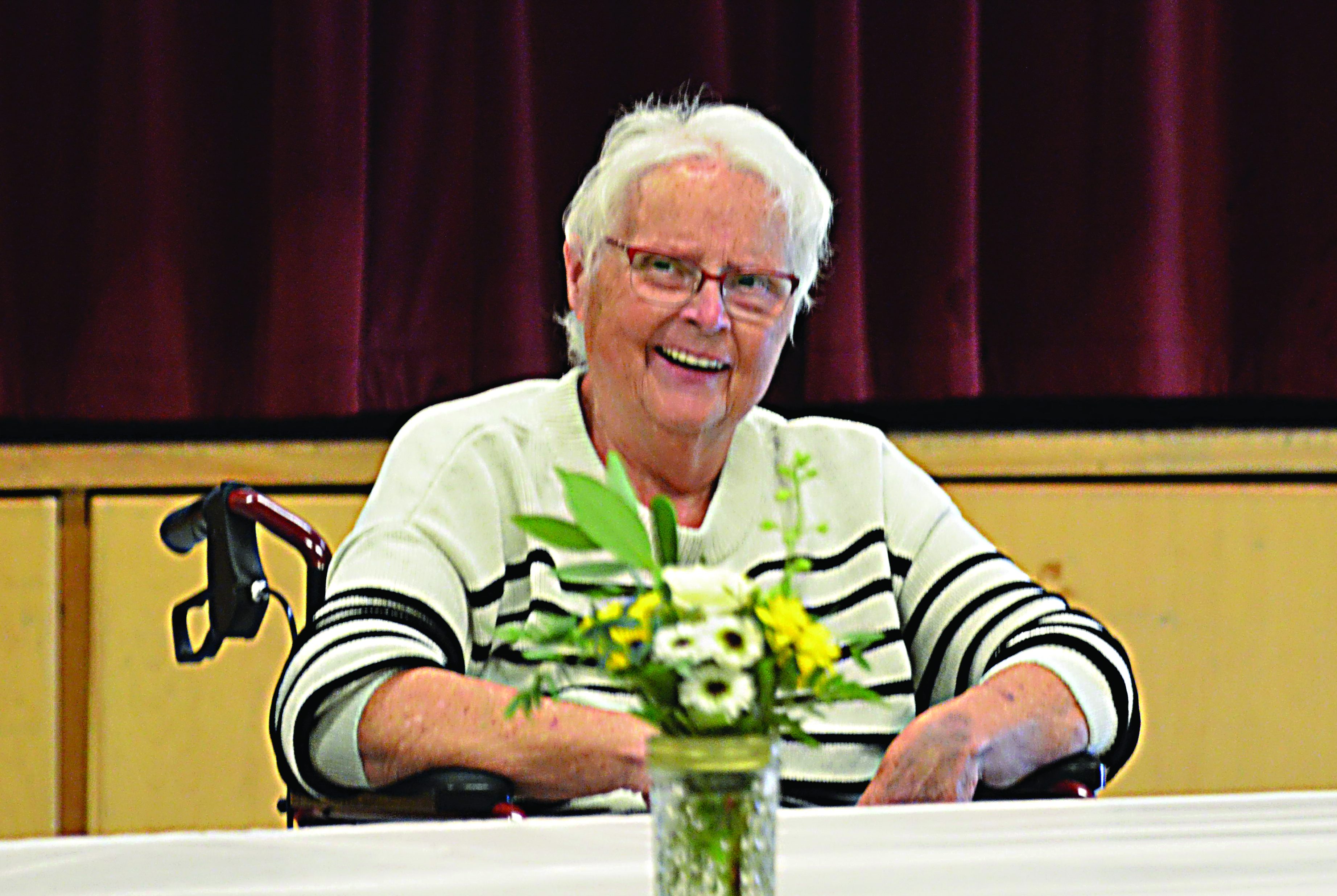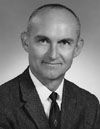County clerks, election officials worry about effects of ranked choice voting
Published 3:00 pm Friday, October 11, 2024

- Baker County Clerk Stefanie Kirby prepares for the May 17, 2022, primary election.
Baker County’s elections official, County Clerk Stefanie Kirby, is among the 16 county clerks to join a political action committee that has expressed its concerns about the effects of a ballot measure that would establish ranked choice voting for federal and some state political races.
The Oregon Legislature referred Measure 117 to voters.
The measure will be on the Nov. 5 ballot.
There are 36 counties in Oregon.
If voters approve Measure 117, ranked choice voting would be used in Oregon, starting in 2028, for these races:
• U.S. president.
• U.S. senator.
• U.S. representative.
• Oregon governor, secretary of state, treasurer, attorney general, commissioner of the Bureau of Labor and Industries.
Ranked choice voting would not be used for Oregon legislative races.
Nor would it be in place for city, county and school board elections unless local jurisdictions decide to use ranked choice voting for their races.
How does ranked choice voting work?
Ranked choice voting would be used in races with three or more candidates.
If there were, say, four candidates, voters could rank all four in order, from their first choice to their fourth.
Voters would not have to do so, however — they could vote for only their top choice, leaving the three other rows on their ballot blank, or vote for their top two preferences, or top three.
(Voters who chose the same candidate as their first, second, third and fourth choice would only have their first choice vote counted; the three others would be overvotes, which don’t count toward that candidate’s total.)
In the first tally, the first-choice votes for each candidate would be counted. If one candidate gets more than half the first-choice votes, that candidate would be elected, just as in a conventional election.
But if no candidate reaches that threshold, there would be a second round of vote tallies. And this is where voters’ second choices matter.
The candidate who received the fewest first-choice votes would be eliminated from the race.
For all voters who picked that candidate as the their first choice, their vote, for the second round of vote tallying, would be given to the candidate who was their second choice.
If one candidate gets more than half the votes in the second round, that candidate is elected.
If none of the three candidates hits the threshold again, the process repeats, with the candidate with the fewest votes eliminated and votes again reallocated as in the second round.
In this example, with four candidates on the ballot, the third tally, with two remaining candidates, would be the last, and the candidate with the most votes would win.
A similar process would be used for races in which multiple candidates are elected, such as a city council or school board race, in a jurisdiction that decided to use ranked choice voting.
In Oregon, voters in Benton and Multnomah counties, and the city of Portland, have adopted ranked choice voting.
Benton County voters approved a ranked choice voting measure in 2016.
Portland voters will use ranked choice voting for the first time in the Nov. 5 election, to choose a mayor and city councilors. Multnomah County voters will use ranked choice voting for the first time in 2026.
County clerks’ concerns
Kirby said on Thursday, Sept. 19, that although she has endorsed the Concerned Election Officials political action committee started by Rochelle Long, Klamath County clerk, she is not advocating for how people should vote on Measure 117.
Other counties whose clerks endorsed the committee include Union, Wallowa and Malheur.
Kirby said her goal is to explain to voters the concerns she and other county clerks have about the possible effects of ranked choice voting.
“It is troublesome,” Kirby said. “I want people to do their homework on the measure. There are issues that are concerning to us (county clerks), as the ones who actually do the work.”
If voters approve Measure 117, Kirby said county clerks “will do the best we can to make it work.”
In a statement that will be printed in the voters pamphlet, Concerned Election Officials listed several worries about Measure 117, including:
• Possible confusion. Kirby noted that the measure would institute ranked choice voting for some, but not all, races. That would result in ballots that include both traditional and ranked choice voting.
“It’s going to create a large amount of voter confusion,” Kirby said.
• Cost. The voters pamphlet statement contends that “there are substantial costs involved with implementing (ranked choice voting), which counties do not have.”
• Delayed results. Because ranked choice voting can involve multiple rounds of tallying votes, final results could be delayed longer than they are now, Kirby said.
Advocates counter that ranked choice voting gives voters more options to express their preference for multiple candidates rather than forcing them to choose only one to support.
The website for the Yes on 117 political action committee states: “Right now, voting often feels like choosing between the lesser of two evils. And if you do vote for the candidate you feel passionate about, it often feels like throwing away your vote because they have no chance of winning. Measure 117 changes that. Having the option to rank our candidates in order of preference gives us the power to vote for who you want, how you want.”
Proponents also contend that ranked choice voting forces candidates to try to appeal to a broader range of voters because voters’ second and third choices could potentially decide the winner.





